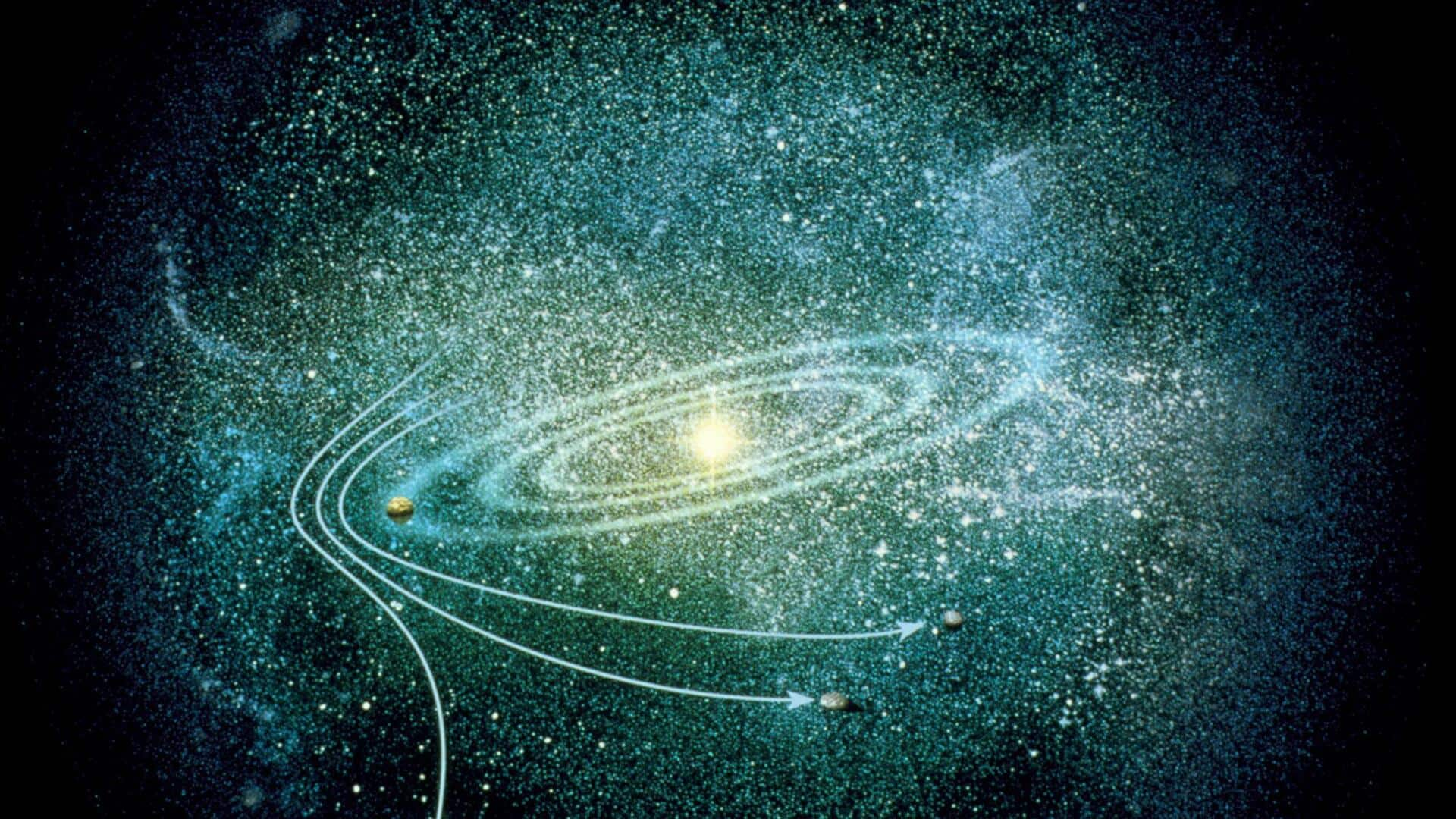
This icy wall surrounding solar system has a spiral shape
What's the story
A recent discovery during a planetarium show might change our understanding of the Oort Cloud, a distant wall of icy bodies orbiting the solar system. The Oort Cloud was thought to be spherical and lies at a distance 1,000 times farther from the Sun than Neptune. However, while testing scenes for Encounters in the Milky Way, a show that premiered at Hayden Planetarium in New York City, researchers discovered something unexpected: the cloud had a spiral structure.
Discovery
Curator of the show was confused
The spiral structure was first seen while testing a scene showing a detailed view of Earth's celestial neighborhood. Jackie Faherty, an astrophysicist at the American Museum of Natural History and curator of the show, recalled her surprise at the discovery. "I was confused and thought that was super weird. I didn't know if it was an artifact, I didn't know if it was real," she said.
Process
How was the spiral structure's existence confirmed?
To confirm the spiral structure's existence, Faherty contacted David Nesvorny, an Oort Cloud expert from the Southwest Research Institute in Boulder, Colorado. He had offered scientific data for the scene and initially suspected distortions in data visualization. However, upon reviewing his data, he confirmed the spiral's presence and also published a scientific paper about it in April in The Astrophysical Journal.
Properties
What is the Oort Cloud?
The Oort Cloud, first proposed by Dutch astronomer Jan Oort in 1950, is thought to be a shell of icy bodies orbiting the Sun from as far as 1.5 light-years away. It is the most distant region of our solar system and is made up of remnants from its formation. These remnants were scattered in all directions by planets after they formed, resulting in many icy bodies that do not share the same orbital plane as the solar system itself.
Origin
Spiral structure influenced by galactic tide
Nesvorny explained that the spiral structure is due to the influence of the galactic tide—the gravitational field of our galaxy—on small bodies and comets in the Oort Cloud. This field, exerted by stars and dark matter in it, twists their orbital planes into a spiral shape. The spiral lies in the inner part of the Oort Cloud, which is closest to us.
Impact
Discovery highlights importance of visualizing universe in new ways
The spiral structure sheds light on the dynamics of our solar system. Faherty said, "If you're going to come up with a theory of how solar systems evolve, you should take into account the kind of shapes you might have in their structure." She also emphasized that this discovery is a prime example of what can be learned by visualizing the universe in new ways.